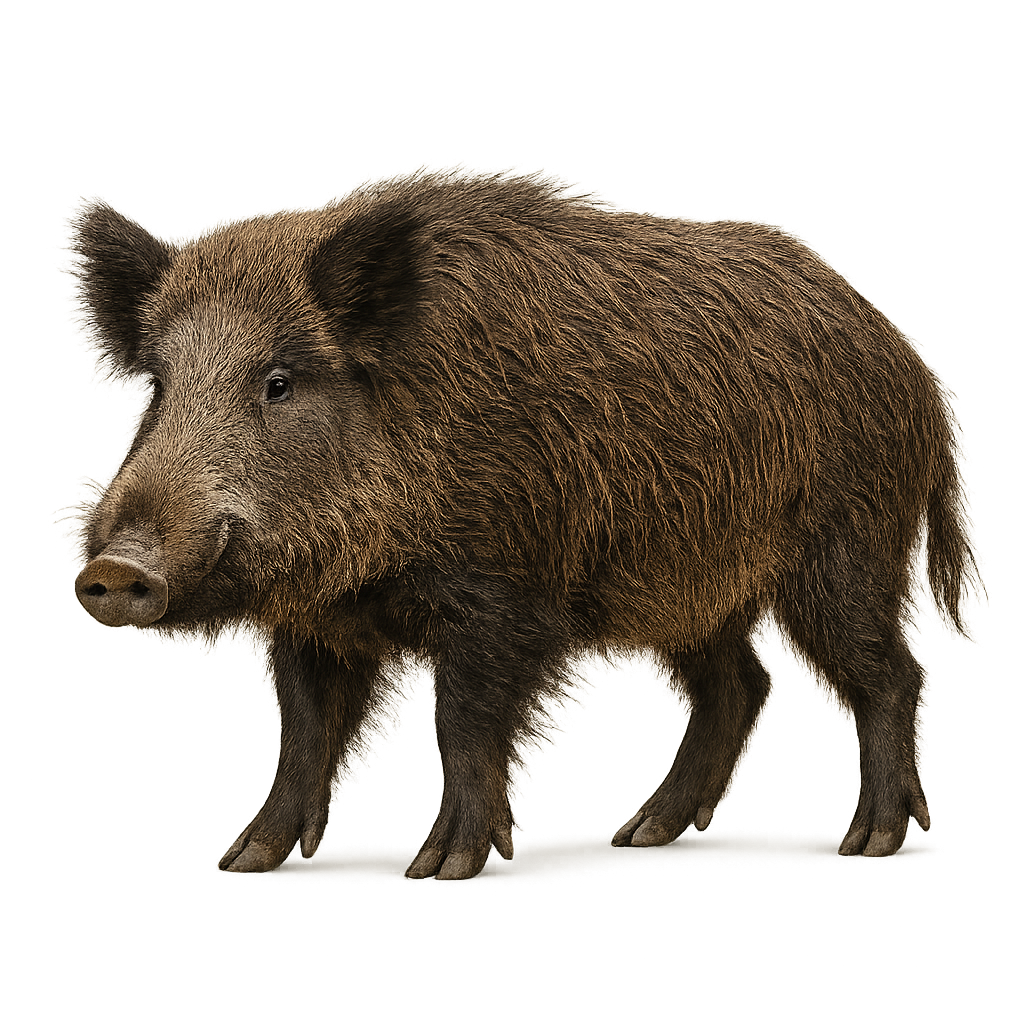Your wildlife photography guide.
Explore the eurasian wild pig in detail, study its behavior, prepare your shots.
Where to observe and photograph the eurasian wild pig in the wild
Learn where and when to spot the eurasian wild pig in the wild, how to identify the species based on distinctive features, and what natural environments it inhabits. The WildlifePhotographer app offers tailored photography tips that reflect the eurasian wild pig’s behavior, helping you capture better wildlife images. Explore the full species profile for key information including description, habitat, active periods, and approach techniques.
Eurasian Wild Pig
Scientific name: Sus scrofa

IUCN Status: Least Concern
Family: SUIDAE
Group: Mammals
Sensitivity to human approach: Shy
Minimum approach distance: 30 m
Rut period: November to December
Gestation: 115-120 jours
Births: March to April
Habitat:
Forests, swamps, and crops
Activity period :
Mainly active at night, generally discreet during the day.
Identification and description:
The Wild Boar is a large omnivorous mammal found primarily in forests, wooded areas, and mountains of Europe, Asia, and North Africa. It measures between 1.2 and 1.8 meters in length, with a tail of 15 to 25 cm, and weighs between 50 and 100 kg, though some specimens can reach up to 200 kg. Its fur is typically brown, with darker hair on the back and lighter on the sides. The Wild Boar is a nocturnal animal, primarily feeding on roots, fruits, seeds, insects, and small animals. While it is considered game, it can sometimes pose a threat to agricultural crops due to its tendency to root through the soil. This species is widely distributed, and its population remains relatively stable, although it is sometimes threatened by excessive hunting and habitat loss.
Recommended lens:
400 mm – adjust based on distance, desired framing (portrait or habitat), and approach conditions.
Photography tips:
Use a telephoto lens to photograph from a distance, respecting the discreet and sometimes aggressive nature of the species.
Photograph early in the morning or late in the afternoon, when the soft light highlights the details of the boar's fur.
Look for it in forests, woods, and undergrowth areas, where it feeds mainly on roots, fruits, invertebrates, and sometimes young plants.
Be patient and discreet to avoid disturbing its natural behavior. Avoid sudden movements and maintain distance, especially during the rutting season or with young ones.
The Wild Boar is a widely present species, but it can become aggressive, especially when it feels threatened. It is essential to respect its space and minimize disturbances, particularly during the breeding season and population management.
The WildlifePhotographer App is coming soon!
Be the first to explore the best nature spots, track rutting seasons, log your observations, and observe more wildlife.
Already 1 430 wildlife lovers subscribed worldwide

